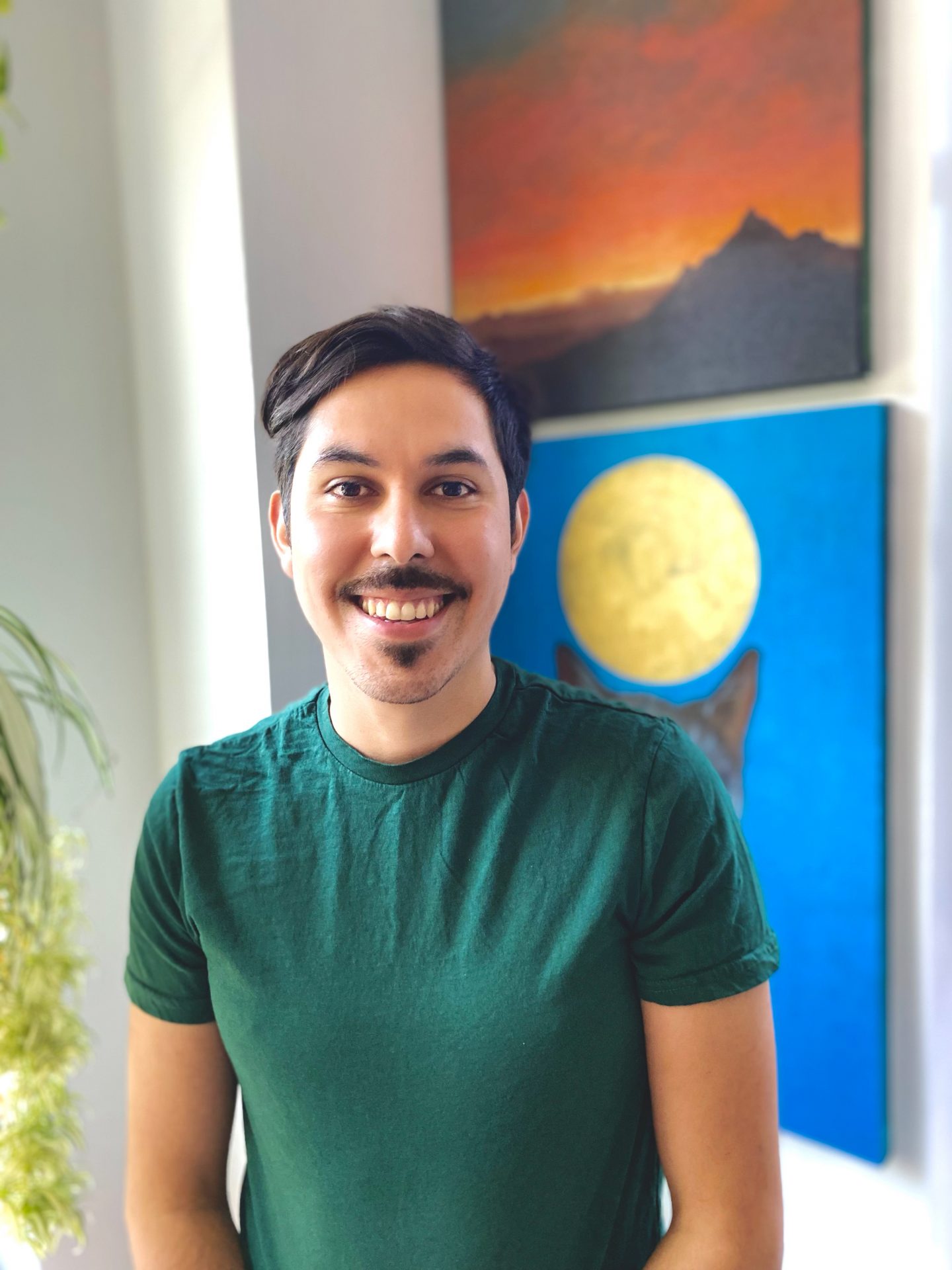
Chilean born artist, Fabio Puentes, comes from a long lineage of highly talented artists. Raised between the borough of Queens, NY and the coastal port city of Valparaiso, Chile, Puentes, art teacher by day & Latin percussionist by night, creates other worlds and parallel universes with his one-of-a-kind paintings. Never one to shy away from color, Fabio’s paintings are truly a joyride of his visions of darkness and light. His intense studies of philosophy, spirituality, and anatomy are ever-present throughout his body of work. His most recent solo exhibition “ALCHEMY & DREAMS” garnered praise throughout NYC and beyond. I was recently lucky enough to have the opportunity to speak with Fabio about his paintings and what influences his creative process and his work.
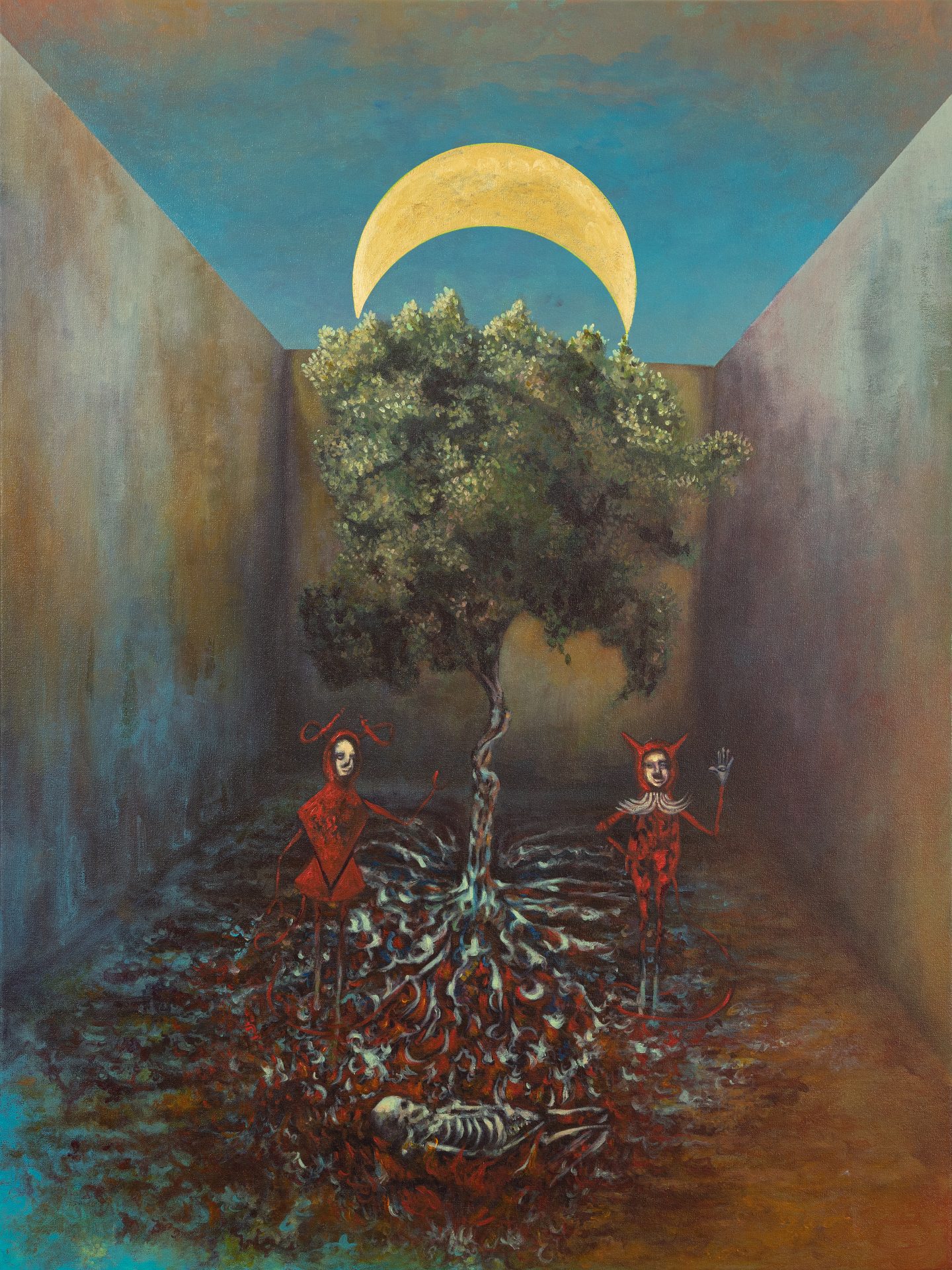
What was your motivation to begin your journey in the art world?
First of all, I have to thank my grandmother, Gladys Palacios, for getting me started as a visual artist. She was an art teacher in Chile and started to nurture the pathway to develop my creativity, technique, and discipline as an artist, giving me detailed feedback on the things that I needed to work on. She taught me how to paint in oil, showing me perspectives, color value and different brush strokes to create texture effects.
I also began to gradually experiment with drawings, color pencils and oil pastels. I remember that my brother would draw Marvel and Donkey Kong characters, really neat drawings, and I would ask him to draw one for me. He wouldn’t do it, so I would take on the challenge, even though I knew I would get frustrated if it didn’t come out like his drawings! it motivated me to figure out proportion, use a correct color palette and, not least, deal with frustration.
Ten years on, I assumed art as a creative responsibility that I wanted to pursue as a lifelong activity. By that time, I am talking about 2008, I was intrigued by Zen Buddhism, alchemical symbolism and shamanism. I’ve always tried to integrate these topics into my artwork, addressing them in the creative process.

Have you been formally trained?
Yes, for four years I attended the University of Playa Ancha located in Valparaiso, Chile. I graduated from art school in 2014 with a specialism in sculpture and chalcography.
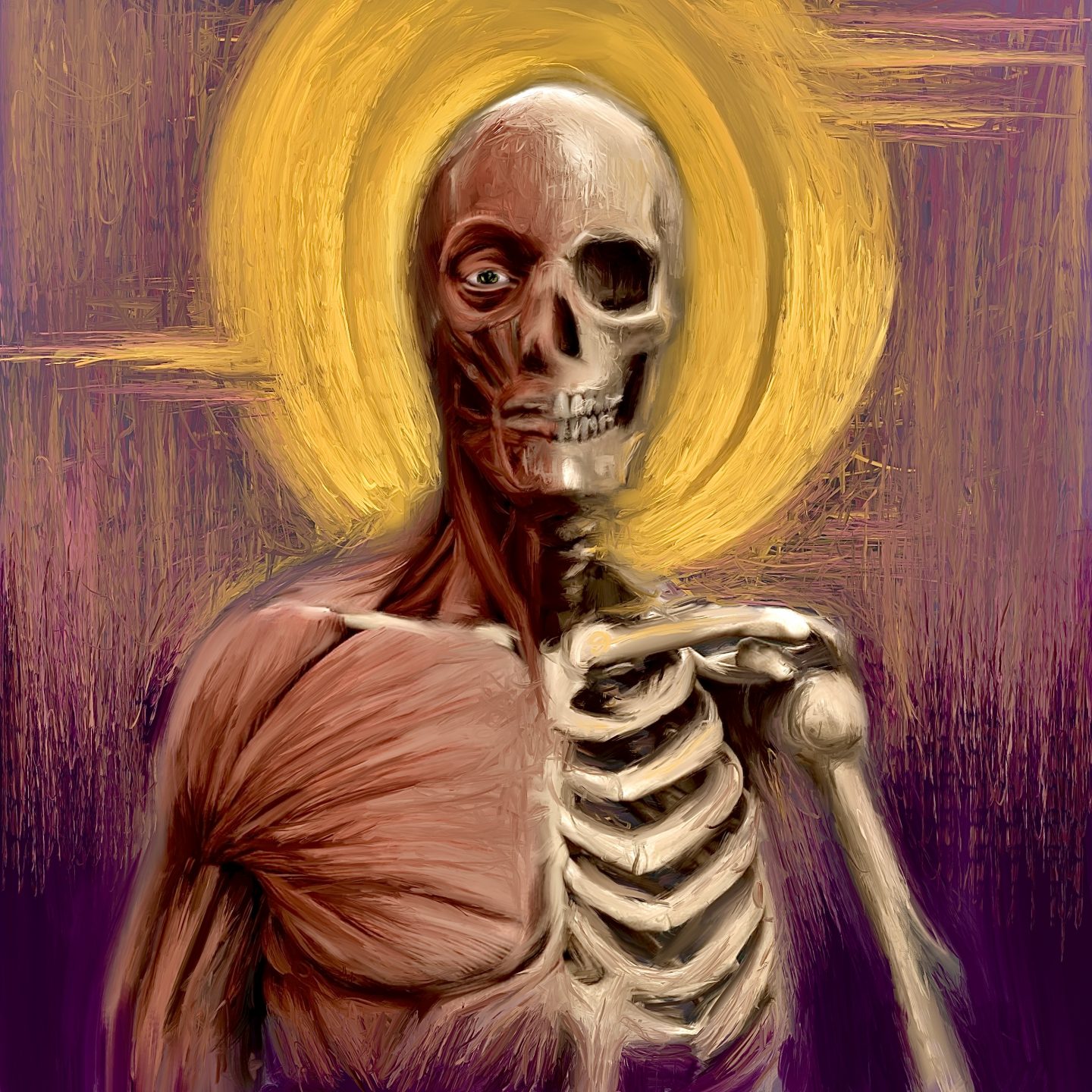
Some of my absolute favorite works of yours are the surreal paintings of the skeletal system. Tell me more about these.
Contemplating bone structures and learning about anatomy has made me understand how complex and sacred our physical bodies are. Once you start studying the body parts and you notice the perfection within the body, you start feeling this sense of interconnectedness, where you are more aware of the forms, colors and shapes that make us human. My paintings express these ideas as a way of divinizing the body, mind, and spirit, mixing both the unconscious and the conscious world.
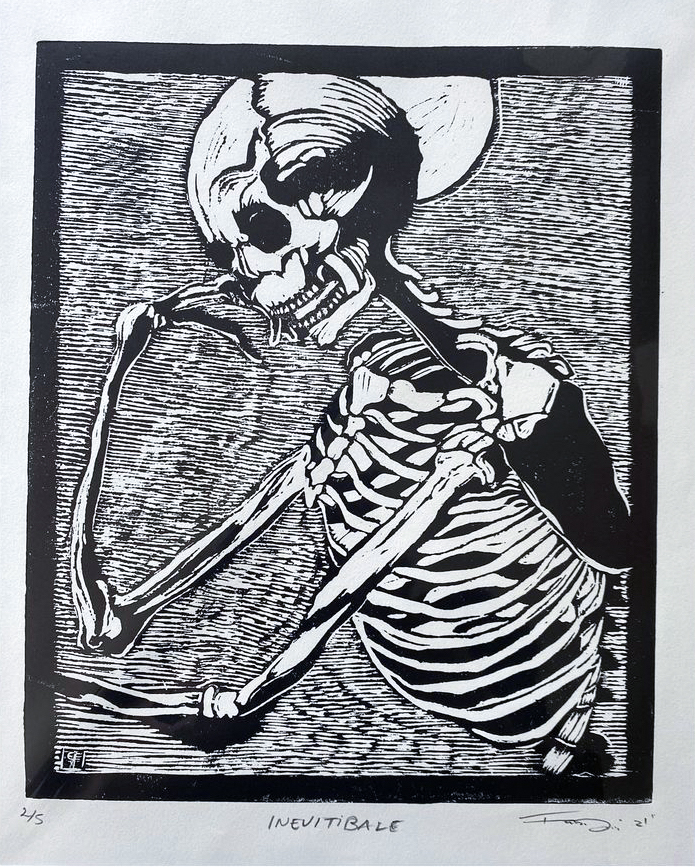
I feel your paintings of the human form are hauntingly intimate. Where do you draw inspiration?
They really are very intimate. Most of the work comes from deep thoughts, reflections and from things that I have experienced in my life. It’s sometimes hard for me to communicate and express all of the things that I feel with another person, even if that person is close to me. I just find it easier to transfer a feeling into an image and break it down into symbols (birds, eyes, trees) or any other image that connects with the idea. I also combine tangible experiences with outer body experiences or lucid dreams that I sometimes have, coming up with different imagery to interpret these events.
In addition, I take inspiration from philosophers that have shifted my way of thinking and viewing the human form and psyche. Some of my references are Alan Watts, Friedrich Nietzsche, and D.T. Suzuki. Interviews from Tibetan masters, like the Dalai Lama, have also made me understand the importance of how to perceive death from another perspective. Lastly, anime series like Evangelion and Ghost in a Shell have been major psychological and symbolic influences on my work.
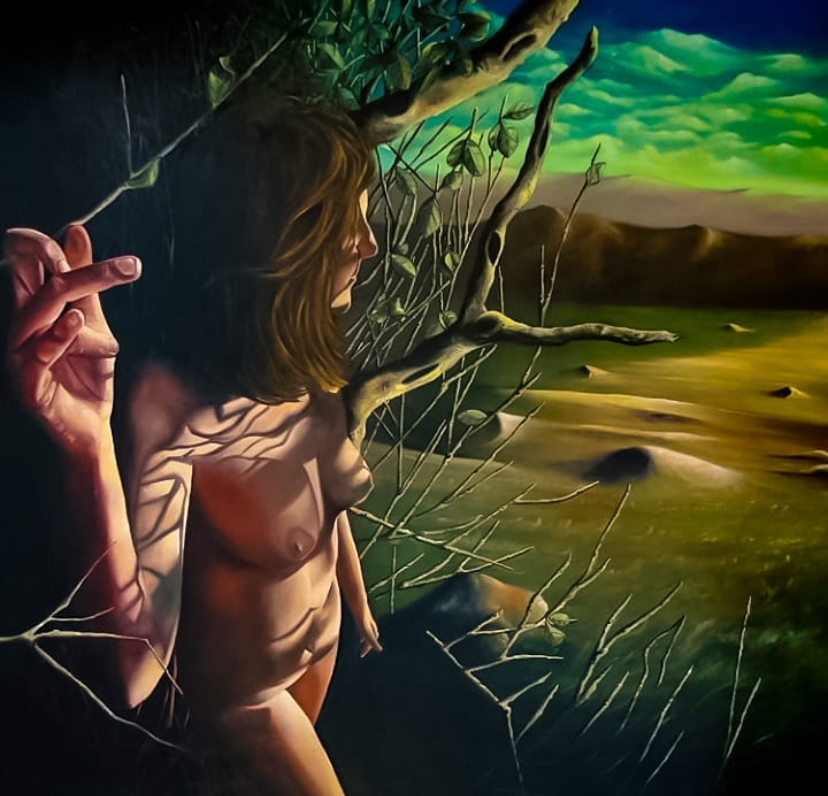
Has being an educator influenced your work?
Of course!!!! I learn so much from the little people (elementary students). They remind me of how easy it is to be innovative, or how to naturally use art as a coping skill, to express and explore feelings. Big shout out to my students and their amazing creative minds!
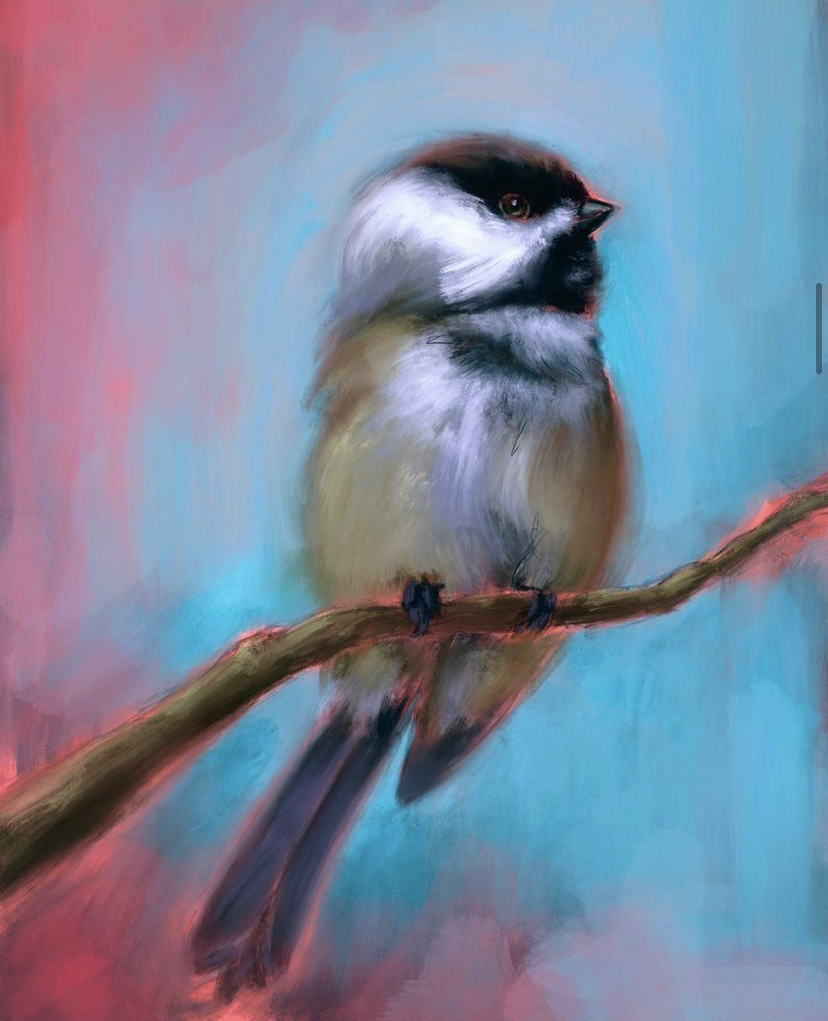
Who or what was the strongest influence in your life growing up?
“Gladys Palacios”, my grandmother. She is really the main person who influenced me and got me to paint instead of watching TV all day. I also have a really good friend who’s a marvelous painter, Martin Riveros. We would paint together in his studio back in Chile and have these deep conversations about life, death, Tibetan Buddhism, and Zen Buddhism, among other topics. My chalcography professor, Jorge Martinez, was also a strong influence and a great mentor while I was working on my etchings and aquatints. He also guided me through my thesis: “Symbolism and Zen”.
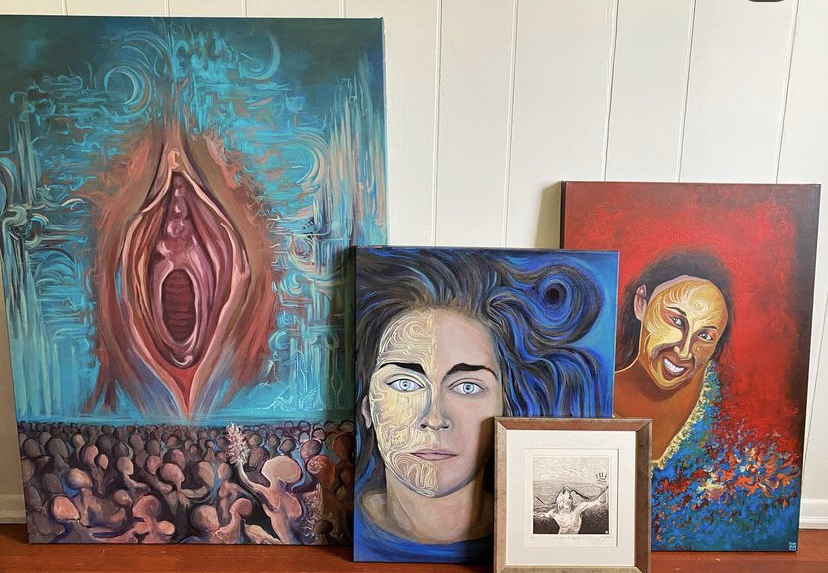
How has your work changed over time?
My paintings used to be very abstract in the beginning when I started creating for the first time, then I started making these shamanic and mystical paintings, referencing Mapuche tales. Once I got to college, I started focusing on more figurative and detailed painting, using photo references to make images more realistic and represent tangible objects.
Currently, I am working on surrealist paintings which I feel represent the work processes I have learnt and used throughout my artistic career.
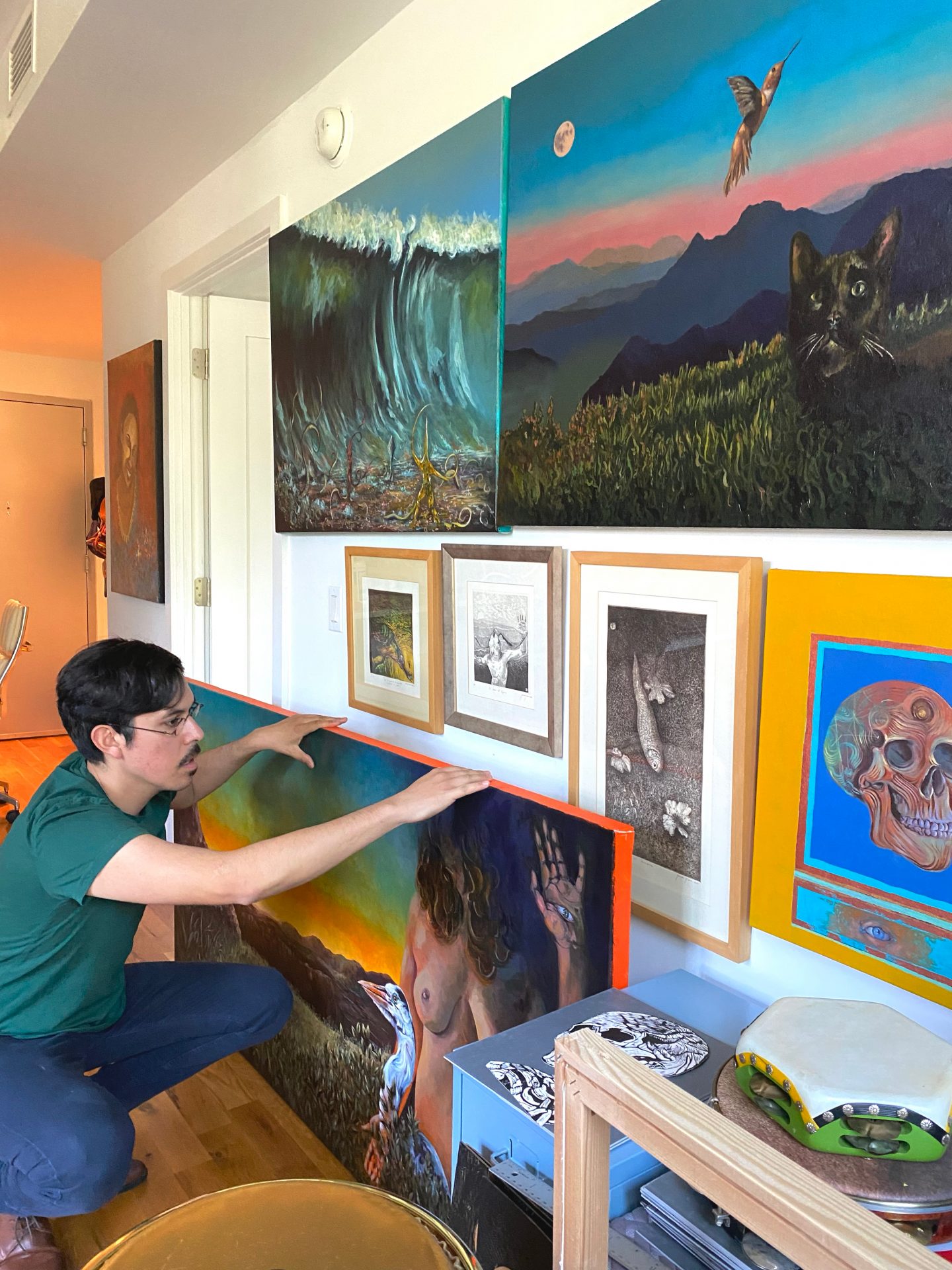
Do you ever create hidden meanings or messages in your pieces?
All the time! I have all sorts of small details that I include in my artwork, especially with the etchings. I find these hidden images to be fun, revealing factors of personal experiences that are happening, either in parallel with the project I am working on or from a quick idea I had while in the process of creating.
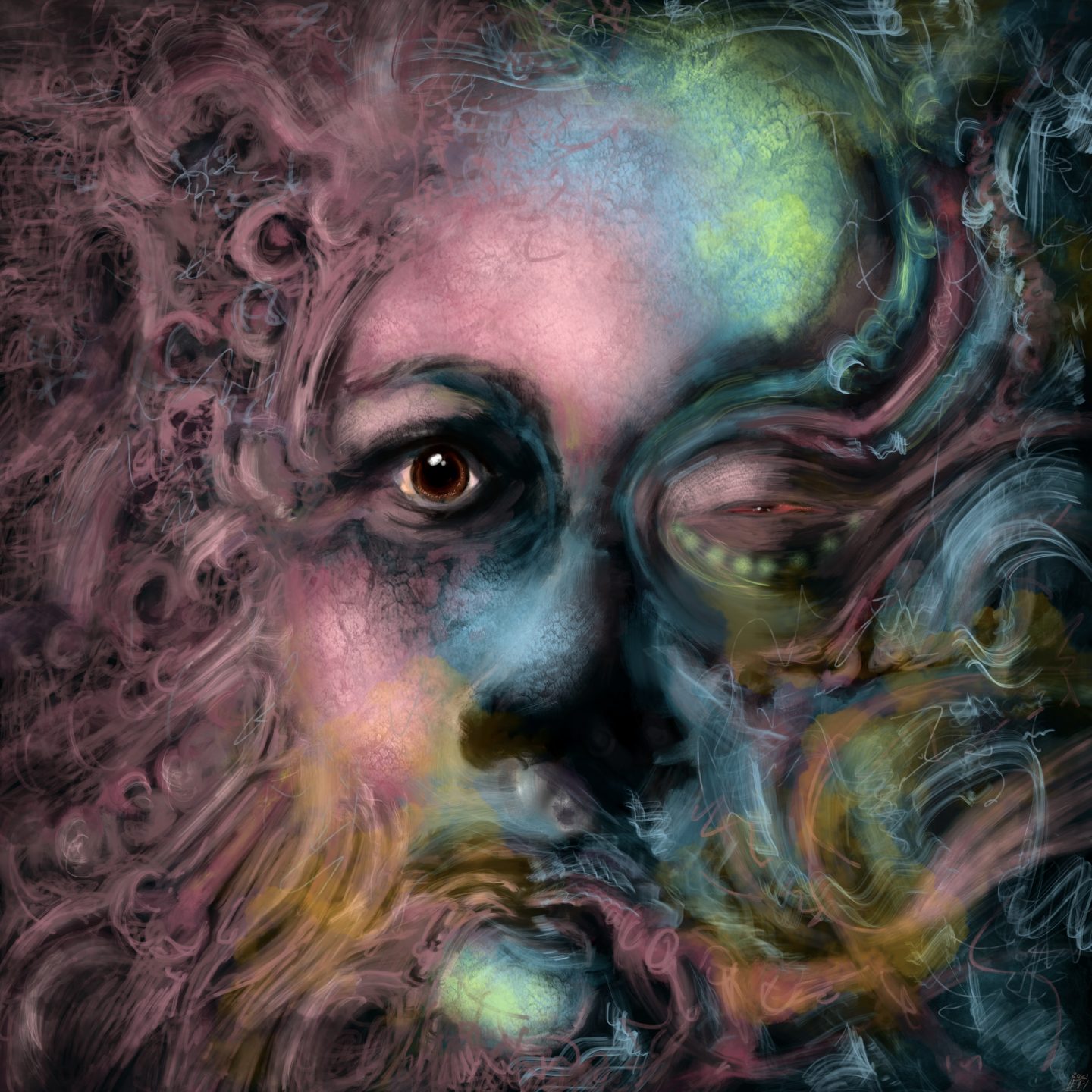
Tell me about a piece you are most proud of.
I actually have two pieces I am extremely proud of, both of them are recent paintings that I worked on in 2021: “End of a Cycle” and “Longing”. These paintings represent a stage of my life where I was going through different personal changes. As I was painting, I felt that these pieces were a coping device by which I was able to be transparent in what I wanted to communicate, this time not to an audience but to myself. “End of a Cycle” and “Longing” were paintings with a lot of ambiguity in the process; there was always this sense of not knowing what would come next, of not being in control and just improvising as I was painting. It was very challenging but rewarding once I had finished them.
Both paintings sold quickly after I completed them, helping me to realize that all that energy put into the art pieces came from a creative wellspring, a source that was telling me to believe more in the creative voices or my intuitive visions, and showing me that not all voices are benevolent. You may find demons wherever there is a deity, but we have to listen carefully to channel correctly where we want to take our unconscious energy.

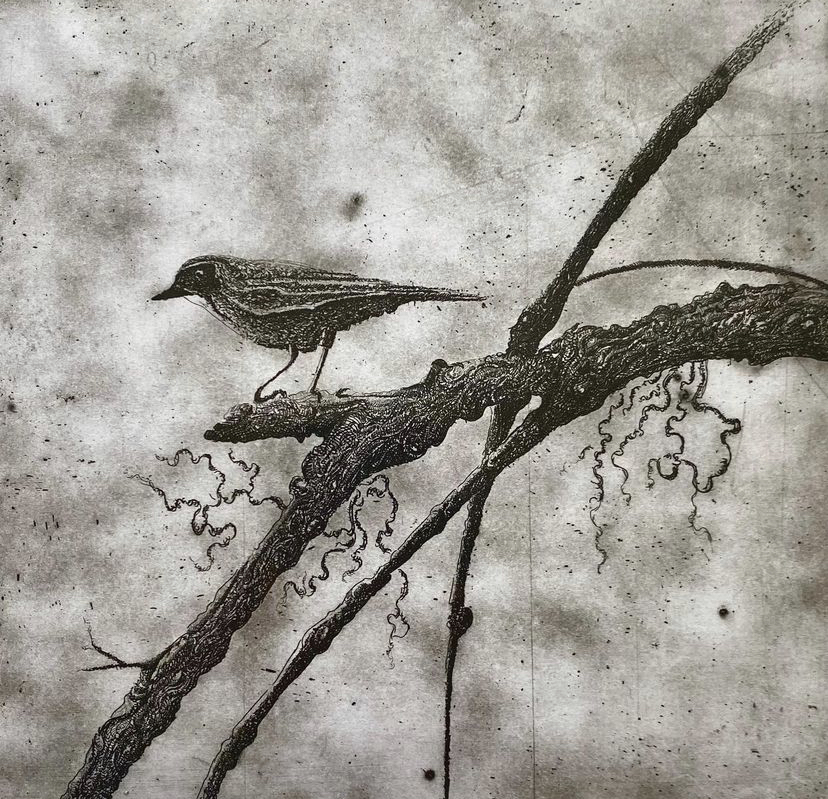
When do you know a piece is finished?
Essentially, when I have finished adding transparent glazes or balancing the contrast between shadows and highlights. I also check that every layer is covered properly and that color transitions are smoothly blended into the background. Finally, I take the painting and add 3 layers of high gloss varnish to really get the colors to vibrate, although I have to say that I am still learning about the varnish world. I am still not convinced that this is the final touch that I want the paintings to have, but I have been testing out new varnishing procedures, so someday I’ll have the correct formula. But honestly, I always feel that something is missing, so I’m still figuring that out, ha!
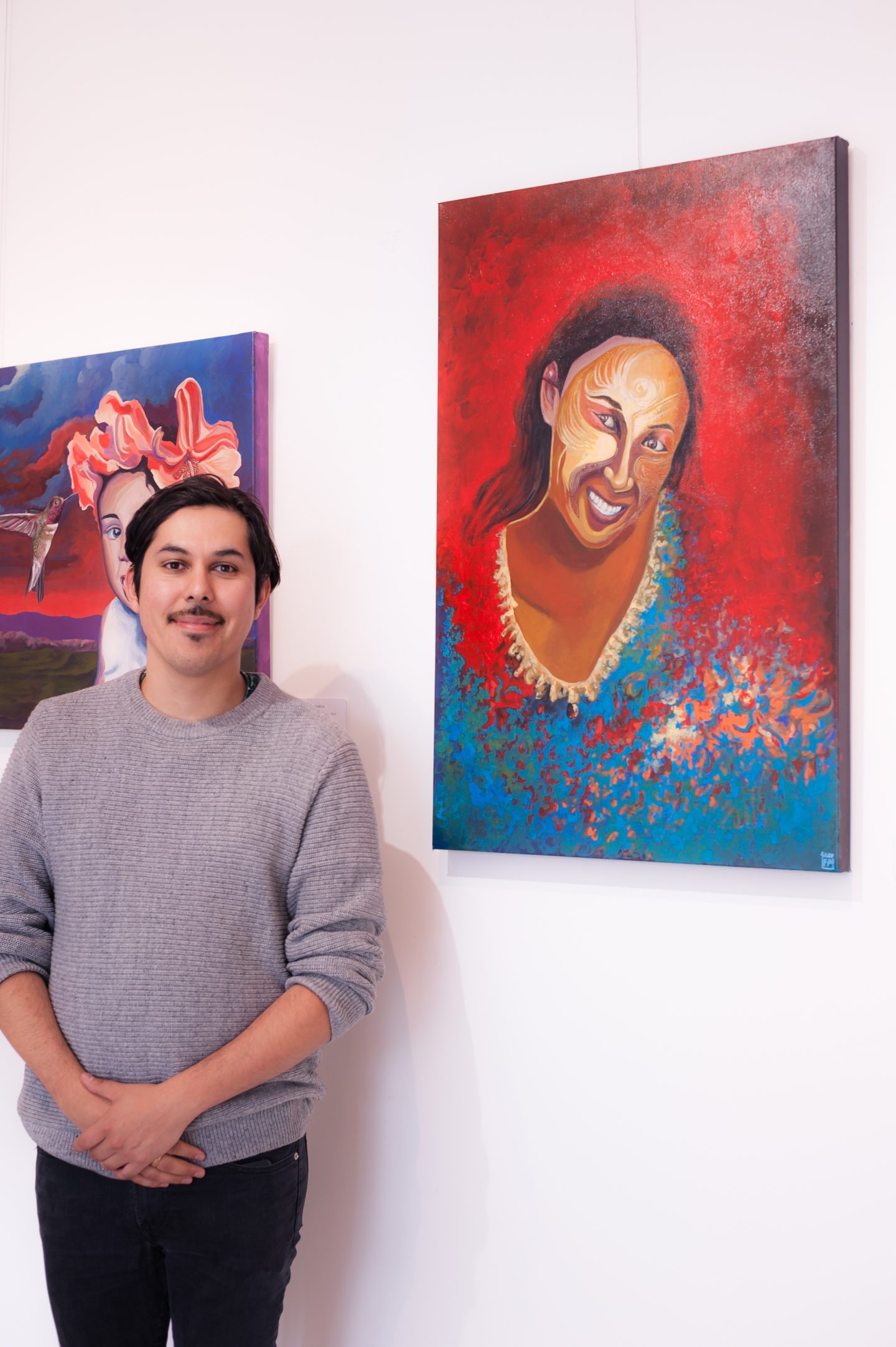
What is the best advice you’ve ever been given?
Practice mindfulness with any task at hand.

How can people stay in contact with you?
People can follow me on Instagram @fafos.artworld. My web page is under construction, but I will be posting it on my BIO once it is finished.

Lastly, what do you know for sure?
There is always something new to learn.
- Comedian Matteo Lane– HIS RECIPE FOR SUCCESS - August 3, 2022
- Spencer GarrettThe Winner’s Circle - May 9, 2022
- WINTER 2021 GIFT GUIDE - December 10, 2021
